Tips To Transition To Gray Hair From Colored Hair
Say goodbye to the rough dyed hair and embrace your natural gray tresses with a few tips.

Image: Shutterstock
It is time to stand against societal pressure and embrace our beautiful gray locks! If you are wondering how to transition to gray hair and are worried about the challenges that come with it, allow us to answer your queries.
Transitioning to gray hair is not as scary as it sounds. In fact, it can even be easy and fun if done right. Bid adieu to constantly covering your grays with dyeing, low lighting, and highlighting. Gray is such a sophisticated color, and it is no surprise that it is a trending hair color. So, raise your glasses! Cheers to embracing your silver fox tresses! Scroll down to check out some tips on transitioning to gray hair based on your natural hair color.
In This Article
Ways To Transition To Gray Hair
Our hair undergoes a natural gray transition due to aging and it’s important to pay attention to hair health to ensure that it looks its best. Keeping up with the latest hair products and hair trends can be a great way to express your personal style.
A survey was conducted on 12,589 adults in the United States to understand how people felt about their hair turning gray. The survey found that 58% of the adults said they wouldn’t mind if their hair grayed or turned gray while 29% said they would not be okay with it.
Whether you choose to embrace your gray hair or cover it up, it’s all about self-expression and finding beauty in your new appearance. Having a keen eye for fashion, following regular hair maintenance, and using the right hair styling techniques can boost your self-confidence. And always remember, whether you are transitioning to natural hair or gray hair, patience is key! Here are some ways to transition to gray hair naturally:
1. The Cold Turkey Method

The cold turkey method involves letting your gray hair grow as it is without putting any effort. This means no touch-ups or anything, except for a haircut here and there.
Going cold turkey is an inexpensive way to transition to natural gray hair as it does not require any salon visits or the use of any harsh chemicals. However, the only downside of this method is that it is a long process that requires a lot of time and patience.
It may take almost 20 months for your hair to fully transition to gray. During this time, you can experiment with makeup and explore the outfit shades that will complement your new hair color.
To hide those pesky demarcation lines (where newly grown gray hair and dyed hair meets), wear hats or wigs. You can also try out headbands and scarves to deal with this issue.
 Quick Tip
Quick Tip2. Salon Transition
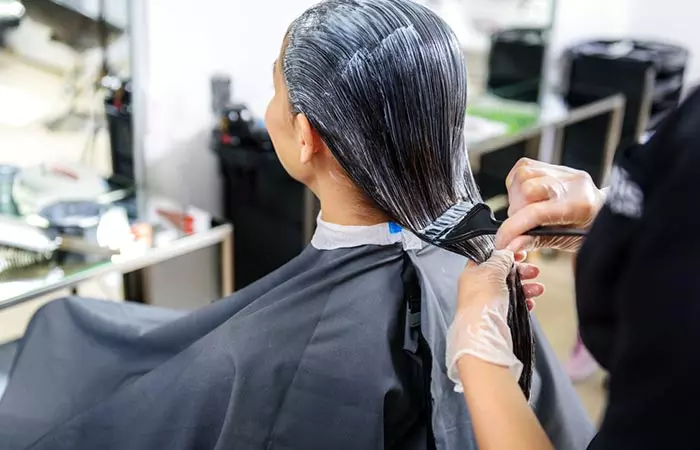
The salon transition method is especially great for women whose careers demand them to be in the public eye. In this method, you let a hair professional handle your transition. The stylist colors your hair with an ashy color, which helps hide the sharp difference between your roots and hair ends.
This kind of transition is faster than the cold turkey method. However, salon transition is quite expensive and may require several salon visits to achieve the desired results.
There are three most common methods when it comes to the salon transition process:
Method 1: Stripping the old hair color with a hair color remover. This helps change your hair color from dark to a lighter shade, which makes the transition easy.
Method 2: Your hair stylist will lowlight your hair with a darker shade to make it brown. As time progresses, your hair stylist will decrease the amount of lowlights and let your natural hair grow in. However, this approach will require frequent visits to the salon.
Method 3: Highlighting your strands with a gray color so that your hairstyle does not look weird where your roots are different from your ends. It will also allow your gray strands to blend in with the rest of your hair.
Note: Highlighting is not as helpful when trying to go naturally gray as, most of the time, the hair may turn darker or whiter, which can become more damaging and require more work later as they are bringing in white, not gray.
4. Dye Strip Method: A Creative Approach

In this method, you dye only a strip of your outer hair and let your gray hair grow underneath. This process requires you to re-dye the outer layer of your hair several times until you are ready to expose your gorgeous gray hair. It can be done at home easily and doesn’t require frequent visits to the hair salon. However, this method is not suitable for people who are severely allergic to hair dyes.
Here’s a step-by-step guide to the dye strip method.
Step 1: Dye your crown hair with a shade that matches your natural hair color.
Step 2: Part your hair in the middle, and let the newly dyed hair color drape over your grays.
Step 3: Repeat the process after 4-5 weeks.
4. Cut Short

Growing out your gray hair fully will take some time. However, if you want quicker results, opt for short gray color hairstyles like a pixie or a bob cut. Cutting your hair short helps reduce the growing out phase.
5. Try Hair Gloss

Hair gloss treatment has recently become popular, owing to its exceptional results. This semi-permanent hair treatment aims at improving the overall condition of the hair and bestows natural shine. But besides attaining lustrous tresses, it is also often used to achieve a subtle shade and translucent color. It offers a tonal effect that can help your gray strands merge seamlessly into other hair and not stand out like they normally would. To confidently embrace your stunning salt and pepper hair, you can opt for this hair gloss treatment that will help create an ombré effect and effortlessly blend the tresses.
The transition to gray hair varies for people with different hair colors. Let’s take a look.
Key Takeaways
- When you have darker colored hair, it is difficult to switch to gray, but if you have a lighter shade, such as platinum or ash blonde, it is relatively easy.
- If you want a smooth transition, you can opt for the salon transition method or go the natural, sophisticated cold turkey way.
- Silver tresses are a slow transition, so you need to embrace this phase and amplify your wardrobe to suit your style.
Transition To Gray Based On Your Hair Color
1. From Blonde To Gray Hair
Transitioning from blonde to gray is easier than transitioning from any other hair color and does not require any special effort. The cold turkey is the best for transitioning to gray hair from a blonde. Since blonde and gray hair are of closer shades, growing it out requires minimum effort.
2. From Brown To Gray Hair
It may take 6-12 months to transition to gray from brown hair. But during this phase, your hair roots and ends may look very different. Opt for the strip-dye method if you have brown hair. This procedure will help grow out your grays.
3. From Black To Gray
Transitioning to gray hair from black can be challenging. If you have black hair, salon transition and a short hairstyle may make it easier for you.
4. From Colored To Gray
If your hair is colored with a darker shade, it may be difficult to transition to gray because the distinction between your gray roots and colored ends may look very obvious. However, you can color your hair in a lighter shade, such as platinum blonde, ash, or metallic blonde, to make the transition easy.
Even after you successfully transition to gray hair, you need to keep a few things in mind. Additionally, You can also check out different hair colors ideas to see what suits your skin tone the most.
How To Maintain Your Hair After Going Gray
- Avoid exposing your gray hair to the sun as it may turn your hair brassy yellow.
- Use a purple shampoo to help tone out the brass in your hair. However, do not use it daily.
- Use a rich conditioner to prevent your gray hair from drying out. You can also apply a conditioning mask twice a week to keep your hair moisturized.
- Environmental stress can make your gray hair look dull. Hence, it is best to wash your hair every alternate day to keep it healthy and fresh.
- Stay away from thick, heavy hair care products that may weigh your hair down.
Some Additional Tips For Transitioning To Gray Hair
1. Embrace Your Roots

The first step in transitioning to gray hair is embracing your graying roots. However, if you are concerned about letting your roots grow gray, visit your hairstylist and develop a plan to make the process easier for you.
Fauzia, a guest blogger on the site Sparkling Silvers run by Anjana, shared her experience dealing with premature gray hair. It took her some time to embrace her lightening locks and love her hair. She writes, “I loved my transition journey. I bought a cap and touch-up root spray but loved my grombre so much that I didn’t hide it (i).”
 Quick Tip
Quick Tip2. Realize That It Is A Slow Process
Whether your hair is colored or not, growing out your gray locks is a lengthy and slow process. Hence, you have be patient.
3. Upgrade Your Style
Want to know how to cover gray hair? We will help you with that! Gray hair can make your complexion appear dull. Thus, choose colors that enhance your skin tone and complement your gray hair. Change your wardrobe and makeup to go with your gray hair.
Infographic: A Simple Guide To Transitioning To Gray Hair
There is no hard-and-fast rule about when you should embrace your beautiful grays. In fact, whether or not you want to do this is your personal choice. If you are ready to embrace your silver streaks, we have got you covered. Check out the infographic below to know about the different ways to transition to gray hair confidently, along with simple tips to maintain it properly.

Illustration: StyleCraze Design Team
Allowing the transition to gray hair from dyed tresses is a great way to stay away from synthetic and harmful colors. Allowing the transition to happen naturally without any effort from your side is an inexpensive way of doing it. However, it is a slow process. For quicker results, you can embrace the salon transition method, which involves de-coloring, highlighting the strands with gray hair color, or lowlighting the hair with a darker shade. If not, you can choose to color the outer layers of your hair to allow gray locks to grow underneath or go for a short haircut.
Frequently Asked Questions
What is gray blending?
Gray blending is the hair coloring technique that incorporates balayage and highlights. The process goes back and forth by initially doing light balayage and then accentuating thinner strands to conceal the gray hair subtly.
Can switching from permanent to semi-permanent dye make my transition to gray easier?
Yes, semi-permanent dye fades away slowly, making it easier to merge naturally with gray hair.
Can I color my hair during the transition to blend the gray with my natural color?
Yes, you can color your hair with a shade or two lighter than your natural hair color, to make your transition seem more natural and seamless.
How can I minimize the appearance of demarcation lines between the colored hair and gray roots?
To minimize the appearance of demarcation lines, you can use root touch-up products, go for highlights or lowlights, go for shorter haircuts, or go for gradually coloring your hair with a lighter shade of your natural hair color so it blends seamlessly.
Should I consult a professional hairstylist for guidance during the transition?
Yes, it is better to consult a professional hairstylist as it can help you customize your transition according to your time pace, hair type, texture, and at your convenience.
Can I continue using my regular haircare routine during the transition?
Yes, you can use your regular haircare routine during the transition. However, if you are using hair color, it is essential to use hair products specially formulated for colored hair. Deep conditioning and nourishing oiling are also beneficial to keep your hair healthy during the transition.
Illustration: Tips To Transition To Gray Hair From Colored Hair

Image: Stable Diffusion/StyleCraze Design Team
Ready to embrace your gray hair? Watch this video to see how to rock it like a boss! These amazing gray hair transformations will inspire you to make the switch.
Personal Experience: Source
StyleCraze's articles are interwoven with authentic personal narratives that provide depth and resonance to our content. Below are the sources of the personal accounts referenced in this article.
i. Fauzia’s Black to White Hair Transitionhttps://sparklingsilvers.com/fauzias-black-to-white-hair-transition/
Read full bio of Madison Dufour
Read full bio of Arshiya Syeda
Read full bio of Ramona Sinha
Read full bio of Medha Deb










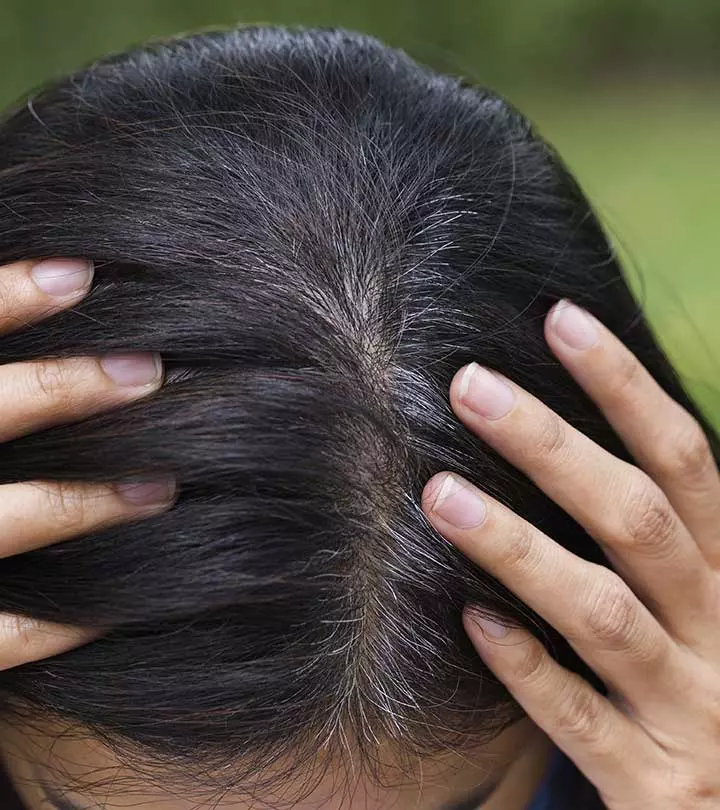



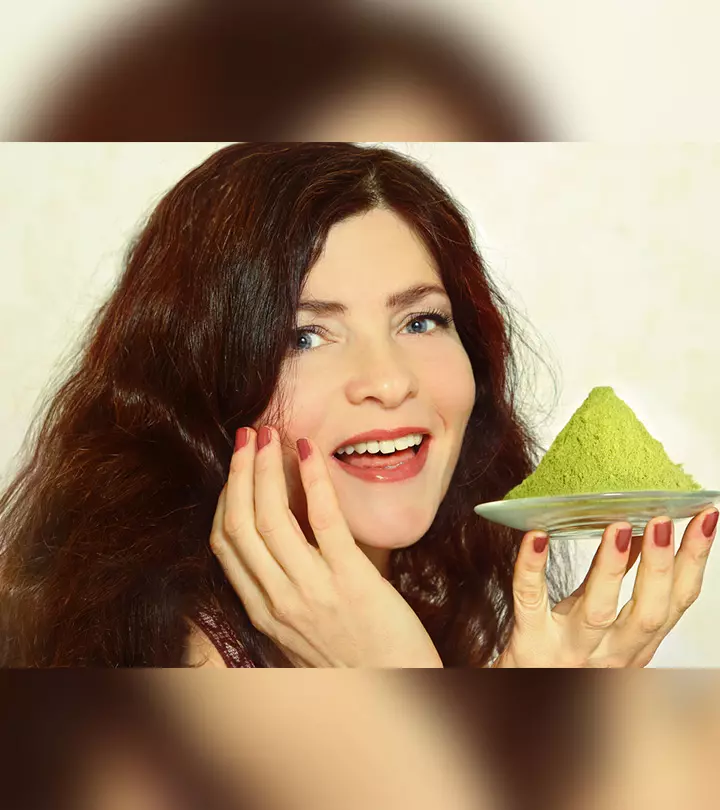

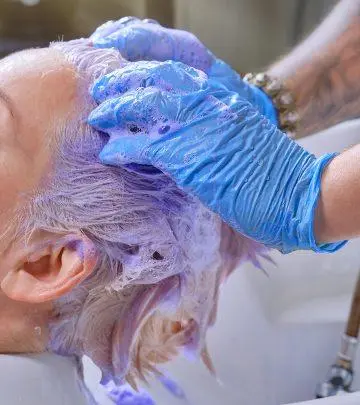








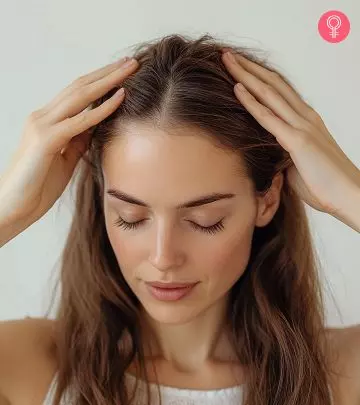

Community Experiences
Join the conversation and become a part of our empowering community! Share your stories, experiences, and insights to connect with other beauty, lifestyle, and health enthusiasts.